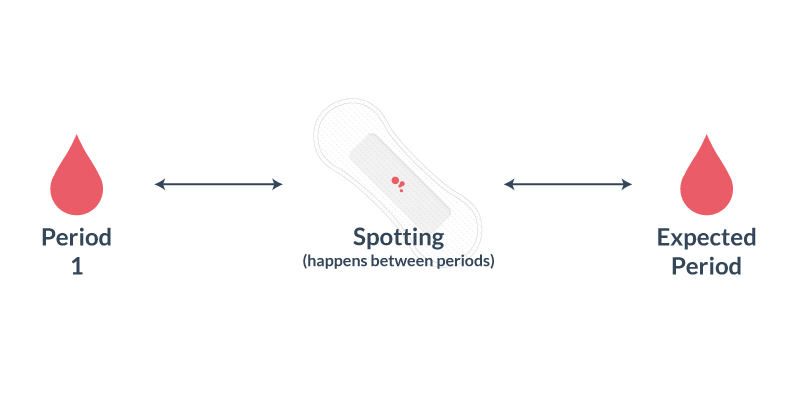Spotting means a light amount of vaginal bleeding. You might see some bloodstains on the toilet paper after you use the washroom or might see some spotting on your underwear. You will only need a panty liner if there is spotting. There is no need for you to wear a tampon or a pad.
If you see spotting or bleeding when you do not have your period then you should be a bit cautious. This is called as intermenstrual bleeding or abnormal vaginal bleeding.
There are different reasons behind spotting. Usually, it is not a serious concern but in rare cases, it can be a matter to worry.
We have put this article together to aware you of the causes of abnormal spotting.
What are the causes of spotting before your periods?
There are several reasons due to which you are seeing spotting and many of them can be treated.
1. Ovulation
Spotting that occurs during ovulation is light bleeding that occurs during the menstrual cycle when the ovary detaches the egg. There are around 3% of women who experience this.
It can be red or light pink in color and can last for 1 – 2 days in between your ovulation cycle.
2. Birth Control
If you are on birth control pills then it can be the reason for experiencing spotting in between periods. Besides this, it can also be due to injections, patches, rings, and implants.
You might notice spotting when you start your birth-control method for the first time. Other reasons for spotting are:
If you mess up your birth control dose or skip some of the doses
Change your birth control dose or pills
If you use birth control pills for a long duration
You should consult a doctor if your symptoms get worse.
3. Implantation Bleeding
It occurs when the fertilized egg attaches to the inner lining of the uterus. This might occur a few days before your next period starts. Its color is between light pink to dark brown and lasts for a shorter time than a period.
4. Pregnancy
It is very common to experience spotting during pregnancy. Some of the women undergo spotting during their first trimester. Its color can be red, pink or brown and has light flow.
In case, you have heavy bleeding or pain in pelvic, you should contact a doctor because this can be a sign of miscarriage or tubal pregnancy.
5. Trauma
If you have experienced a trauma to the vagina or cervix then it can sometimes cause spotting. Such type of trauma can be caused due to sexual assault, rough sex, pelvic exam or tampon.
6. Perimenopause
When you are going into menopause, you will not ovulate for months. This time of transition is called perimenopause. During this time, your period tends to be irregular and you might get spotting.
7. Cervical or Uterine Polyps
Polyps is the growth of abnormal tissues that you might find growing at different places including the cervix and uterus. Cervical polyps can cause light bleeding while having sex, in between periods and some unusual discharge.
8. Sexually transmitted infections (STI)
STIs like gonorrhea or chlamydia can cause spotting in between periods or after you have sex. You should contact a doctor if you think you have STI.
9. Pelvic inflammatory disease
The most common symptom of pelvic inflammatory disease is abnormal bleeding. PID is caused when the bacteria spread from your vagina to your uterus, ovaries or fallopian tubes.
10. Endometriosis
When the tissues that normally line the inner part of the uterus begin to grow on the outside of the uterus then the condition is called Endometriosis. This causes spotting between your periods.
11. Fibroids
Uterine fibroids are the growths that you see on the uterus. The most common symptom of it is spotting between the periods.
12. Polycystic ovary syndrome (PCOS)
Polycystic ovary syndrome is a condition when a woman’s ovaries or adrenal glands produce a lot of male hormones. The most common sign of this condition is spotting.
13. Stress
Stress can cause changes in your menstrual cycle and experience spotting due to a high level of stress.
14. Medications
Blood thinners, hormonal medicines, and thyroid medications can cause vaginal bleeding.





